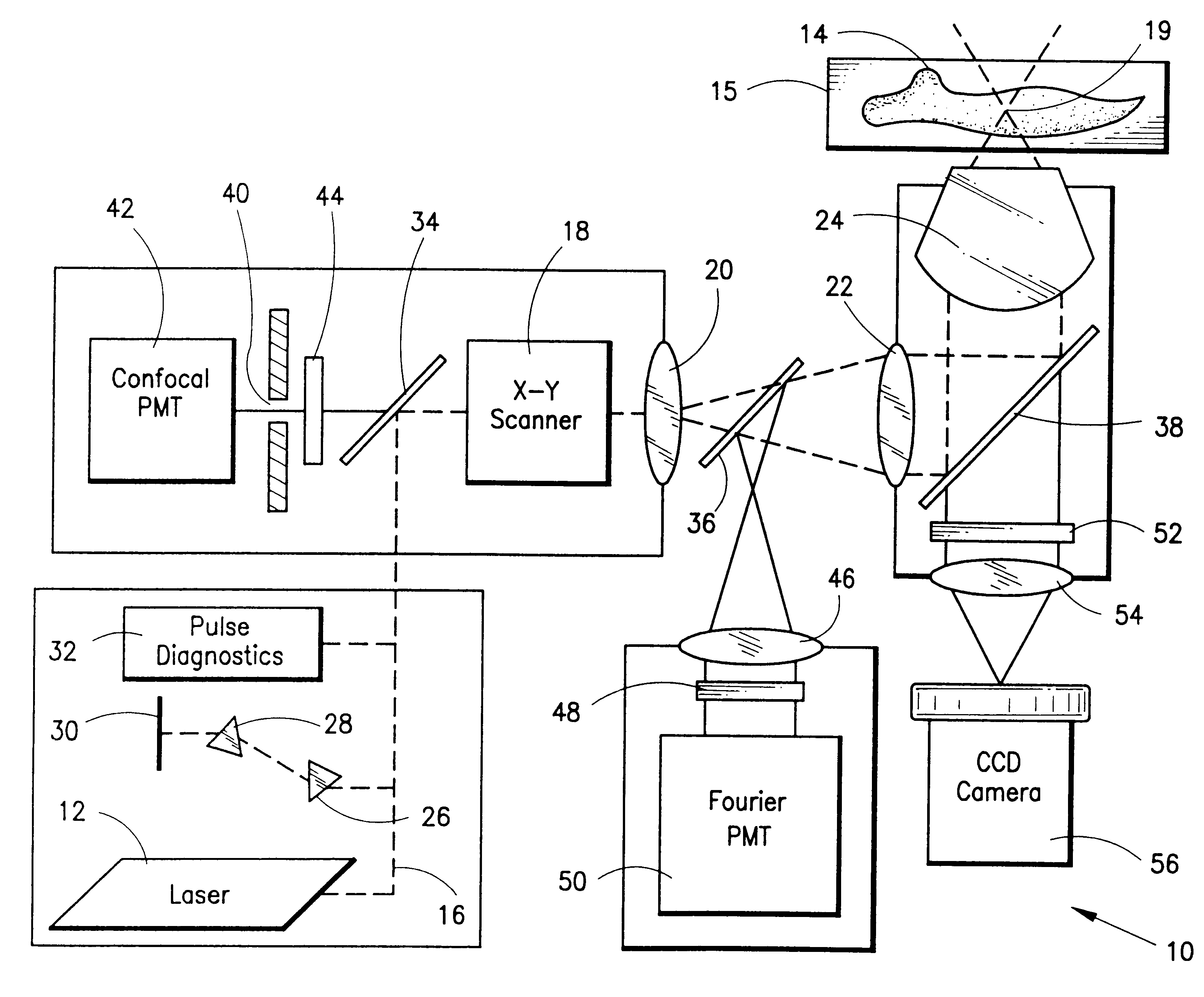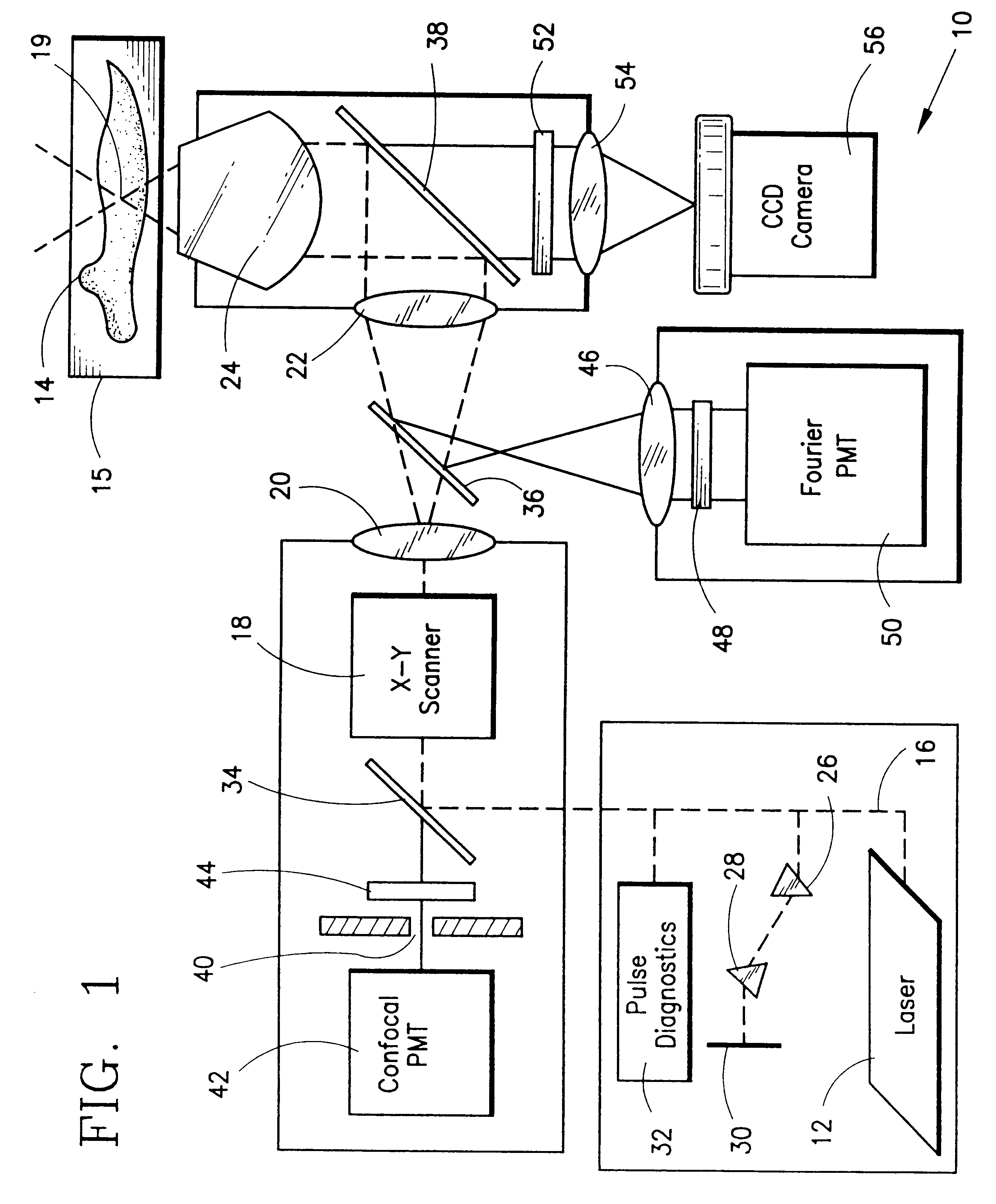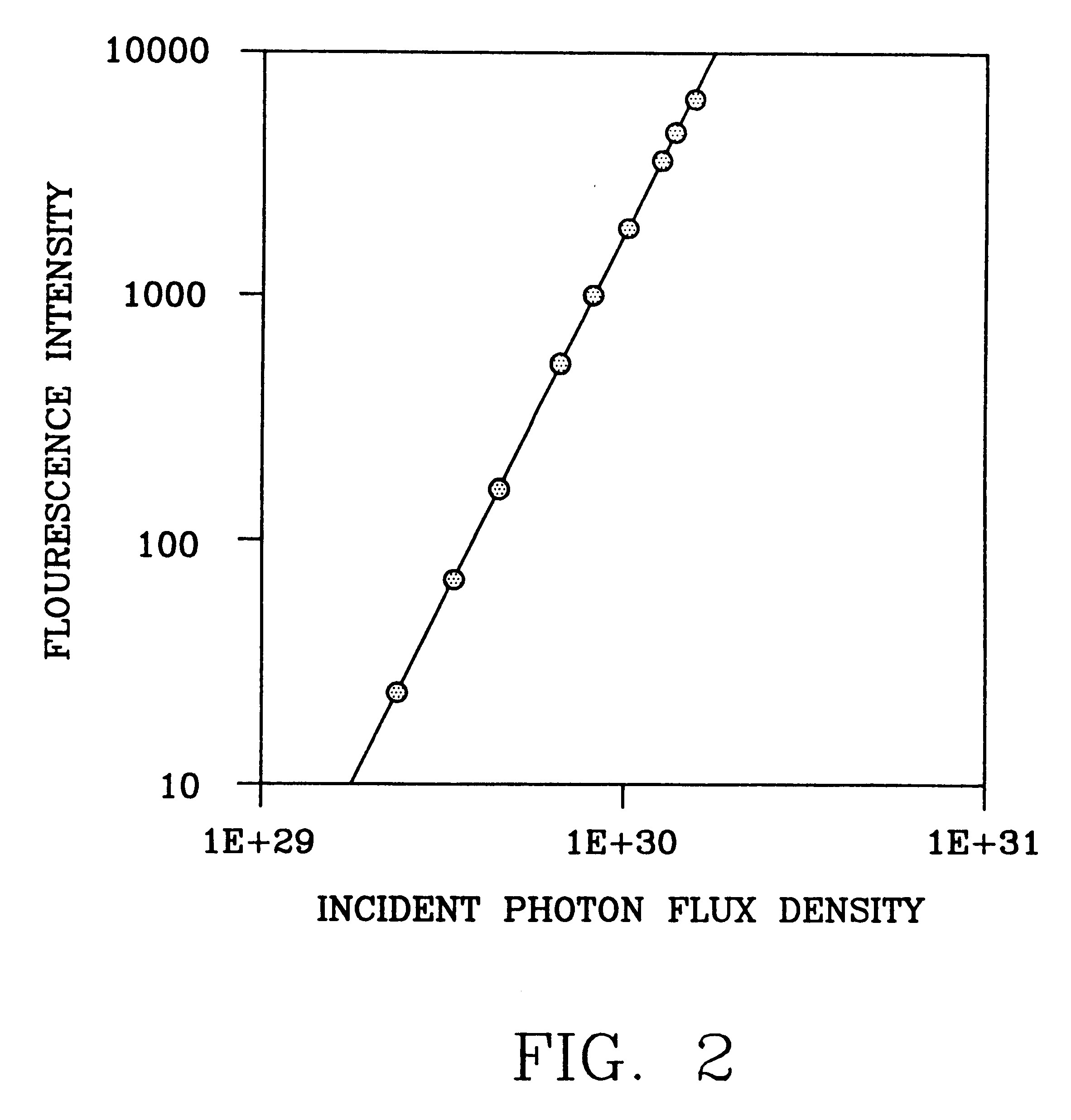Multi-photon laser microscopy
a laser microscopy and multi-photon technology, applied in the field of multi-photon laser microscopy, can solve the problems of inability to achieve technologically feasible laser wavelengths and limited laser technology applications, and achieve the effect of extending the useful range of laser systems and less photodamag
- Summary
- Abstract
- Description
- Claims
- Application Information
AI Technical Summary
Benefits of technology
Problems solved by technology
Method used
Image
Examples
Embodiment Construction
Turning now to a detailed description of a preferred embodiment of the present invention, FIG. 1 illustrates in diagrammatic form a conventional laser scanning microscope 10 which includes three detection alternatives. A subpicosecond pulsed laser source 12 provides the necessary excitation of a specimen or target material 14 which is positioned on a movable stage or other suitable support 15. The laser 12 may be, for example, a colliding pulse, mode-locked dye laser or a solid state laser which can generate pulses of light having a wavelength in the red region of the spectrum, for example about 630 nm, with the pulses having less than 100 fsec duration at about 80 MHz repetition rate. Other bright pulsed lasers may also be used to produce light at different relatively long wavelengths in the infrared or visible red region of the spectrum, for example, to generate the necessary excitation photon energies whose sum will equal the appropriate absorption energy band required by the flu...
PUM
| Property | Measurement | Unit |
|---|---|---|
| wavelength absorption | aaaaa | aaaaa |
| wavelengths | aaaaa | aaaaa |
| wavelengths | aaaaa | aaaaa |
Abstract
Description
Claims
Application Information
 Login to View More
Login to View More - R&D
- Intellectual Property
- Life Sciences
- Materials
- Tech Scout
- Unparalleled Data Quality
- Higher Quality Content
- 60% Fewer Hallucinations
Browse by: Latest US Patents, China's latest patents, Technical Efficacy Thesaurus, Application Domain, Technology Topic, Popular Technical Reports.
© 2025 PatSnap. All rights reserved.Legal|Privacy policy|Modern Slavery Act Transparency Statement|Sitemap|About US| Contact US: help@patsnap.com



